What We Know About Area 51: Secrets, Myths, and Government Disclosure
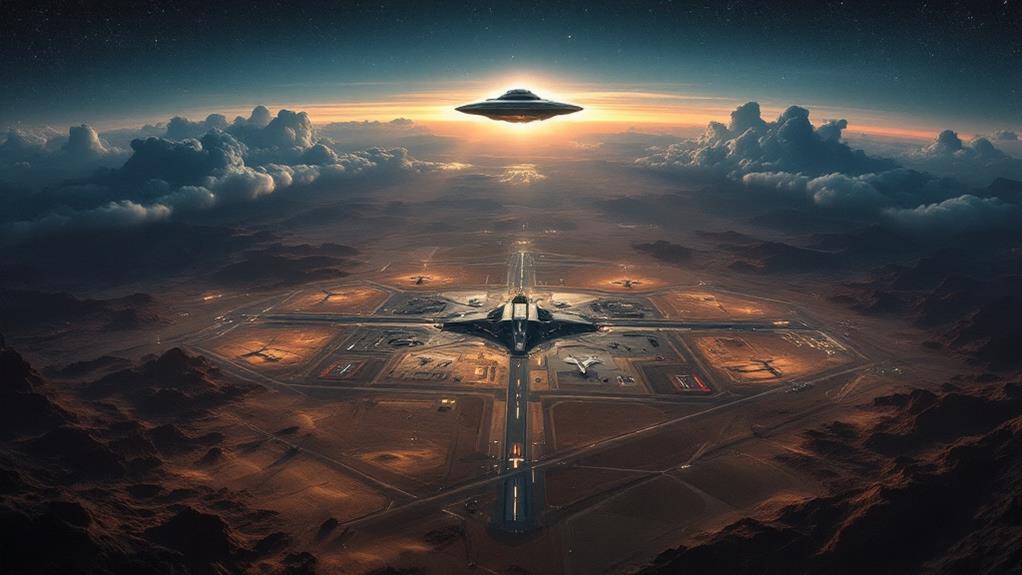
Area 51 is a highly classified U.S. military installation in Nevada, officially used for aircraft testing and technological research. It's played a pivotal role in developing spy planes like the U-2 and SR-71 Blackbird. The base's secrecy has fueled countless conspiracy theories, ranging from alien spacecraft storage to secret government experiments. While many myths persist, the CIA officially acknowledged Area 51's existence in 2013, releasing declassified documents about its history. Despite this disclosure, much of the facility's operations remain classified. The blend of confirmed facts, eyewitness accounts, and enduring mysteries continues to fascinate those seeking to uncover the truth behind this enigmatic site.
Area 51's Official Purpose
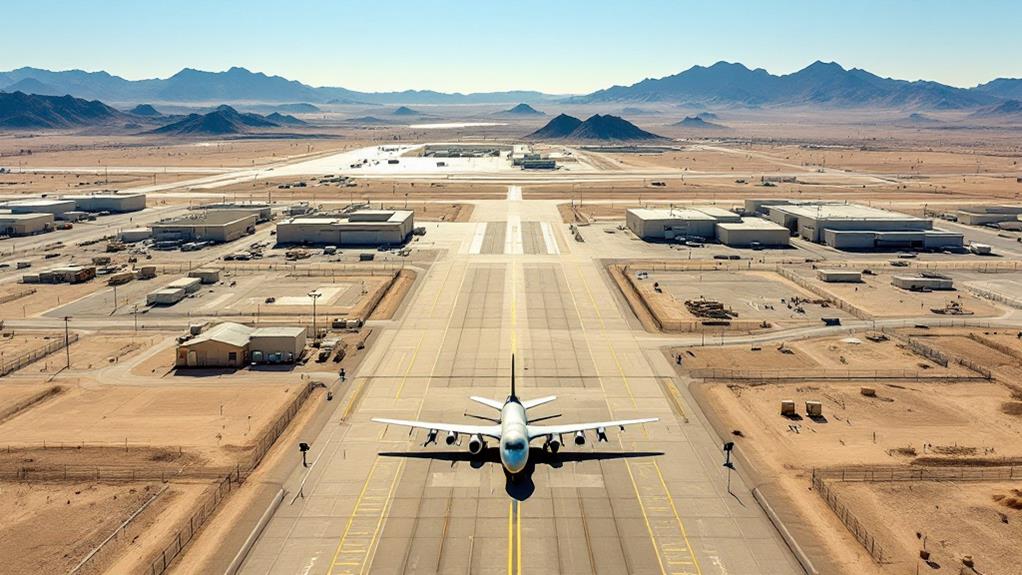
Area 51's official purpose remains shrouded in mystery, but the government has provided some understanding. The U.S. government has acknowledged that Area 51 is a military installation used for aircraft testing and technological research. While specific details are classified, it's known that the facility has played a vital role in developing advanced aviation technology.
You'll find that Area 51 has been instrumental in creating and testing state-of-the-art aircraft, including the U-2 spy plane and the SR-71 Blackbird. These projects were carried out in secrecy to maintain technological superiority during the Cold War. Today, it's believed that the base continues to serve as a testing ground for experimental aircraft and advanced military technologies.
The facility's remote location in the Nevada desert provides an ideal environment for conducting classified research and development. While conspiracy theories abound, the reality is that Area 51's primary function is to expand the boundaries of aerospace technology. The government's need for secrecy has fueled speculation, but the base's core purpose remains focused on advancing military capabilities through innovative aircraft testing and technological research.
Location and Geography
The facility's remote location is a key factor in maintaining its secrecy. You'll find Area 51 nestled within the southern portion of Nevada, approximately 83 miles north-northwest of Las Vegas. It's situated within the Nevada Test and Training Range, a vast military installation covering over 5,000 square miles of restricted airspace and land.
The surrounding terrain features play an essential role in Area 51's isolation. You're looking at a harsh desert setting with rugged mountains, dry lake beds, and sparse vegetation. The base itself is adjacent to Groom Lake, a salt flat that serves as a natural runway. To the west, you'll see the Pahranagat Range, while the Tikaboo Valley lies to the east.
Access to Area 51 is severely limited, with only one known public road leading to the facility's perimeter. You'll encounter heavily guarded checkpoints and warning signs if you attempt to approach. The remote location and inhospitable environment make it challenging for curious onlookers to get close, further preserving the base's mysteries and fueling speculation about its true purpose.
Historical Background
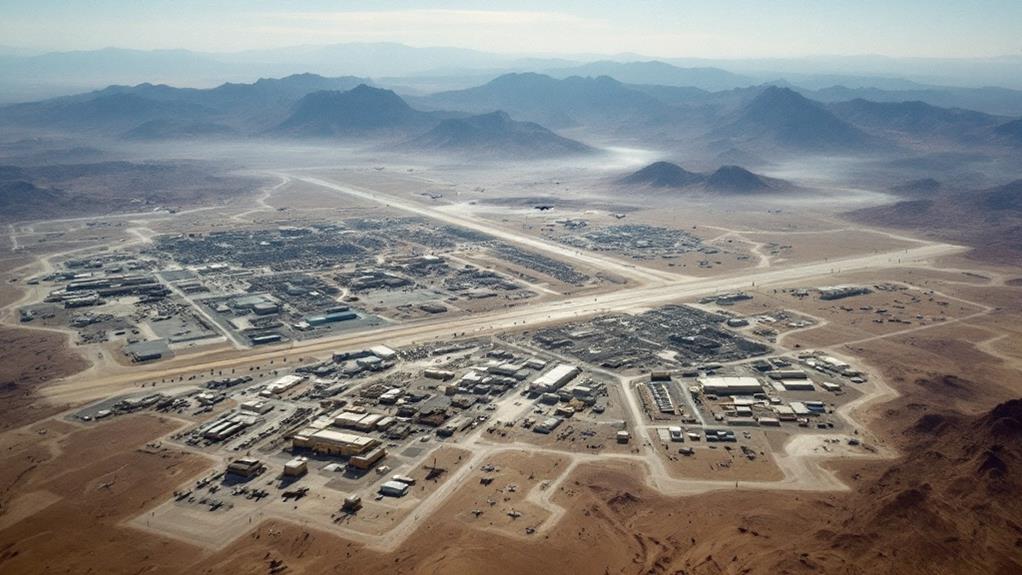
While the isolated location of Area 51 has kept it shrouded in mystery, understanding its history provides meaningful backdrop. The facility's origins date back to the 1950s when the CIA and U.S. Air Force sought a secure location for secret military tests. They chose this remote Nevada site for its vast, unpopulated expanses and proximity to existing military installations.
In 1955, Area 51 became the testing ground for the U-2 spy plane, a high-altitude reconnaissance aircraft designed to gather intelligence on the Soviet Union. As the Cold War intensified, the base's significance grew. It served as a hub for developing and testing early experimental aircraft, including the A-12 OXCART and the SR-71 Blackbird.
Throughout the 1960s and 1970s, Area 51 continued to play an indispensable role in advancing American aviation technology. The facility's existence remained classified until 2013 when the CIA officially acknowledged it in declassified documents. Despite this disclosure, many aspects of Area 51's operations and purpose remain secret, fueling ongoing speculation and conspiracy theories about its true nature and activities.
Declassified Projects and Aircraft
Over the years, several once-secret projects and aircraft associated with Area 51 have been declassified, shedding light on the facility's true purpose. You'll find that many of these declassified programs involved experimental aircraft designs and top secret military tests. The U-2 spy plane, developed in the 1950s, was one of the first major projects at Area 51. Its high-altitude capabilities allowed it to fly over enemy territory undetected.
Following the U-2, the A-12 and its successor, the SR-71 Blackbird, were tested at the facility. These supersonic reconnaissance aircraft pushed the boundaries of aviation technology. The F-117 Nighthawk stealth fighter, with its radar-evading design, was also developed and tested at Area 51.
More recently, declassified information has revealed the existence of unmanned aerial vehicles (UAVs) and stealth drones tested at the site. These projects demonstrate Area 51's role in advancing military aviation technology. While many secrets remain, these declassified projects offer a glimpse into the facility's importance in national security and technological innovation.
Eyewitness Accounts and Sightings
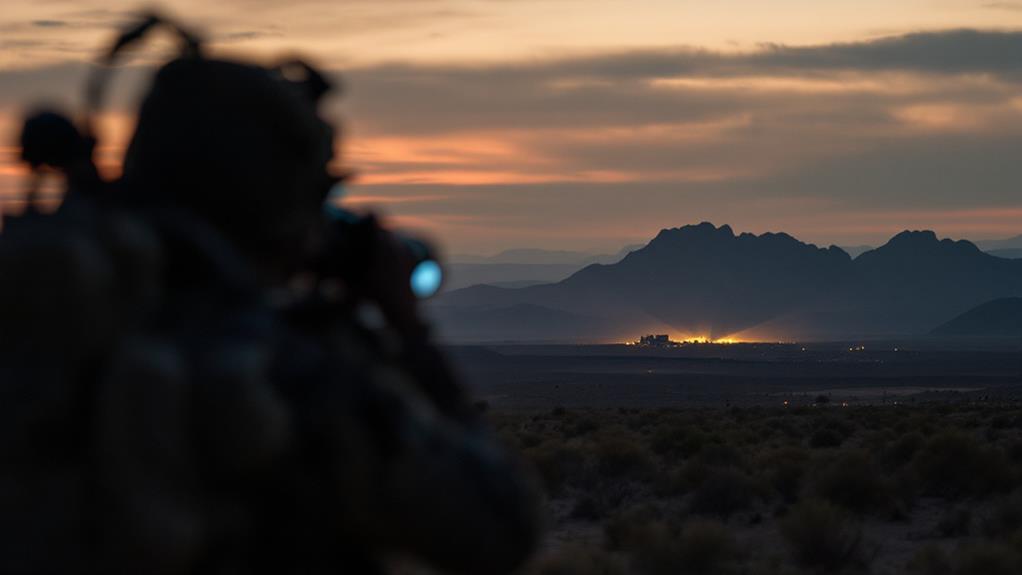
Countless eyewitness accounts and reported sightings have fueled speculation about Area 51's activities over the years. You'll find that many of these stories involve claims of alien visitations and unexplained phenomena. Former workers at the base have shared tales of strange lights in the sky and unusual aircraft that defy conventional physics. Some witnesses report seeing disc-shaped objects hovering silently above the desert, while others describe triangular craft with extraordinary maneuverability.
While skeptics argue that many of these sightings can be attributed to secret military aircraft tests, the sheer volume of reports has kept conspiracy theorists intrigued. You'll hear accounts of people claiming to have seen extraterrestrial beings or witnessed government officials interacting with aliens. However, it's important to approach these stories with a critical eye. Many eyewitness accounts lack concrete evidence, and the secrecy surrounding Area 51 makes it challenging to verify claims. Despite this, the persistent reports of unexplained phenomena continue to fascinate the public's imagination and fuel ongoing debates about what really happens behind the heavily guarded gates of this mysterious facility.
Conspiracy Theories and Pop Culture
Fascination with Area 51 has fueled numerous conspiracy theories and made the facility a pop culture icon. You've likely encountered some of these theories, ranging from alien spacecraft storage to secret government experiments. The secrecy surrounding the base has only intensified public curiosity, leading to a wealth of speculation and pop culture depictions.
Area 51's influence on popular culture is undeniable. You'll find references to it in:
- Movies like "Independence Day" and "Paul"
- TV shows such as "The X-Files" and "Roswell"
- Video games, including "Perfect Dark" and "Grand Theft Auto: San Andreas"
- Countless books and comic series
These portrayals often intertwine with alien abduction theories, further blurring the lines between fact and fiction. You might've seen depictions of grey aliens, flying saucers, or government cover-ups in various media. While these ideas may seem far-fetched, they've become deeply ingrained in the public consciousness, shaping how many people perceive Area 51 and its purpose. The facility's mystique continues to enchant imaginations worldwide, ensuring its place in conspiracy lore and pop culture for years to come.
Recent Government Disclosures
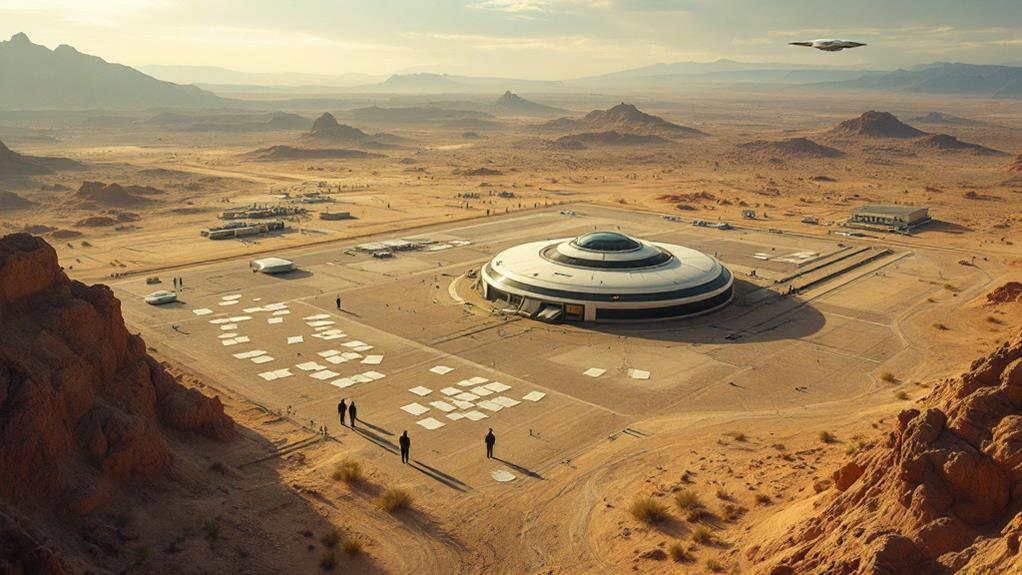
While conspiracy theories and pop culture have long dominated discussions about Area 51, recent years have seen some notable government disclosures. In 2013, the CIA officially acknowledged Area 51's existence for the first time, releasing declassified documents that detailed its history as a testing site for U-2 spy planes. This move towards recent government transparency illuminated the facility's true purpose and helped dispel some of the wilder theories surrounding it.
In 2019, the U.S. Navy confirmed the authenticity of several UFO videos captured by military pilots, sparking renewed interest in Area 51's potential connection to extraterrestrial research. Although these official disclosure statements didn't directly mention Area 51, they fueled speculation about the government's knowledge of unidentified aerial phenomena.
Despite these revelations, much about Area 51 remains classified. The government continues to maintain strict secrecy around current operations at the site, citing national security concerns. While recent disclosures have provided some answers, they've also raised new questions, ensuring that Area 51 remains a subject of fascination and debate for years to come.



